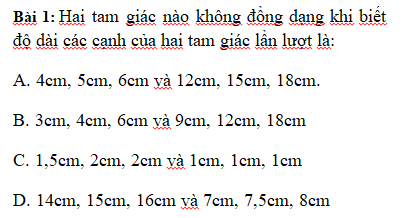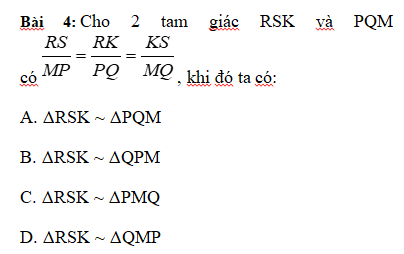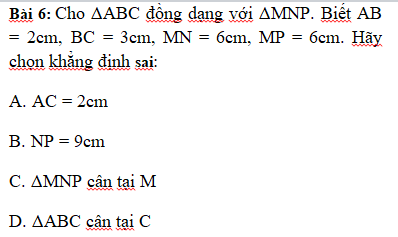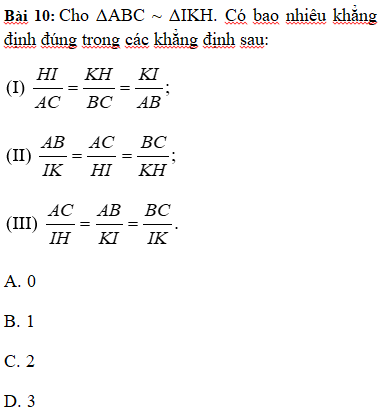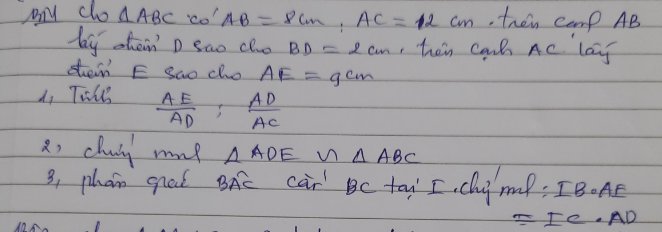a) Xét \(\Delta ABH\) và \(\Delta AKC\) có:
+ \(\widehat{BAH}=\widehat{CAK}\left(gt\right)\)
+ \(\widehat{AHB}=\widehat{ACK}\left(=90^o\right)\)
=> \(\Delta ABH\sim\Delta AKC\left(g-g\right)\) abc
=> \(\dfrac{AB}{AK}=\dfrac{AH}{AC}\) (2 cặp cạch tương ứng)
=> AB.AC = AK.AH
b) Gọi I là giao điểm của BC và AK
Có \(\Delta ABH\sim\Delta AKC\)
=> \(\widehat{ABH}=\widehat{AKC}\) (2 góc tương ứng)
hay \(\widehat{ABI}=\widehat{IKC}\)
Xét \(\Delta ABI\) và \(\Delta CKI\) có:
+ \(\widehat{ABI}=\widehat{IKC}\)
+ \(\widehat{AIB}=\widehat{CIK}\) (2 góc đối đỉnh)
=> \(\Delta ABI\sim\Delta CKI\left(g-g\right)\)
=> \(\dfrac{AI}{CI}=\dfrac{BI}{KI}\) (2 cặp cạnh tương ứng)
Xét \(\Delta AIC\) và \(\Delta BIK\) có:
\(+\dfrac{AI}{CI}=\dfrac{BI}{KI}\)
+ \(\widehat{AIC}=\widehat{BIK}\) (2 góc đối đỉnh)
=> \(\Delta AIC\sim\Delta BIK\left(c-g-c\right)\)
=> \(\widehat{IAC}=\widehat{IBK}\) (2 góc tương ứng)
=> \(\widehat{IBK}=\widehat{BAH}\)
Mà \(\widehat{BAH}+\widehat{ABH}=90^o\)
=> \(\widehat{ABH}+\widehat{IBK}=90^o=>\widehat{ABK}=90^o\)
Xét tứ giác ABKC có:
\(\widehat{ABK}+\widehat{ACK}+\widehat{BAC}+\widehat{BKC}=360^o\)
=> \(\widehat{BAC}+\widehat{BKC}=180^o\)








 Giúp mình làm bài này với ạ
Giúp mình làm bài này với ạ
